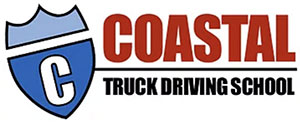Staff Reporter
ELDT Filling Classrooms, Causing Extra Paperwork

[Stay on top of transportation news: Get TTNews in your inbox.]
Driver training schools are adjusting to new federal entry-level requirements that took effect Feb. 7, determining how the rules affect the candidates as well as the schools.
The Federal Motor Carrier Safety Administration’s new Entry Level Driver Training requirements establish national educational standards for commercial driver license applications for large trucks and buses. Training that must be completed within one year consists of classroom theory and driving time on closed courses and public roads. Drivers can locate approved instructors through a new registry of training providers.
Trucking’s driver shortage stands at 80,000, according to American Trucking Associations.
The Training Provider Registry is now fully operational and mandatory use is in effect. Learn more: https://t.co/qhIxOdOaA8 pic.twitter.com/ylLNgohIyc — FMCSA (@FMCSA) February 7, 2022
“We’ve been absolutely slammed for a while, but even more busy since this mandate has come into effect,” Tyler Reisnaur, general manager of Elite Truck School in Hillsboro, Ore., said of enrollment. “Right now, we’re booked until mid-June.”
Reisnaur said some companies have stopped conducting internal training and are now outsourcing.
“We’re pulling out of the same pool of people that all these companies are pulling from looking for drivers,” he said. “Good instructors are drivers with some experience and with good people skills. If there’s a driver shortage, it’s going to be tough to find instructors, as well.”
Recruiter Ron Jimenez at Carolina CDL Training Center in Candler, N.C., said his four-week course is booked two months in advance.
“We only take five students per class, but the demand has increased,” Jimenez said. “People were not actually understanding what the mandate was going to be, so they wanted to get in and get training first, thinking they weren’t going to be able to or it would be much longer.”

A recruiter for Carolina CDL Training School says,“People were not actually understanding what the mandate was going to be, so they wanted to get in and get training first." (Carolina CDL Training School)
In California, students now must log at least 15 hours of driving time, including 10 on the road, said Santiago Rodriguez, director of America Trucking Driving School. Established in 2000, his school has offices in Los Angeles, Orange County, Riverside and San Diego.
With the ELDT requirements, his company lengthened its CDL course from six to 10 weeks and increased tuition from $3,000 to $4,500.
“We had to add 60% more road-time driving into our program, which increased the cost,” he said.

Host Michael Freeze speaks with TMC Chairman Randy Obermeyer and Brenda Neville of the Iowa Motor Truck Association about how to recruit young drivers and technicians. Hear a snippet above, and get the full program by going to RoadSigns.TTNews.com.
Scheduling driving tests is another challenge, he said. California does not permit third-party driving tests — except for employers of truck drivers — resulting in backlogs.
“Their online system only shows you 60 days out,” he said. “For many months on end, you’d log in and wouldn’t see any appointments available.”
He noted the pandemic worsened the situation, as the state’s department of motor vehicles twice shut down for 90 days.
“We actually have a truck in Arizona,” which drivers can elect to use for a test, he said, noting other state schools have done the same. “To get your license potentially a month earlier is probably worth more than the $300 [Arizona test fee] at the end of the day. You can start working.”
Want more news? Listen to today's daily briefing above or go here for more info
A California DMV spokesperson said CDL tests are conducted at 23 locations, including 15 with Saturday options, and said appointments are available within 30 days at all of them.
Rodriguez said reporting also is a challenge. Among the FMCSA Drug and Alcohol Clearinghouse (which tracks drivers’ drug test results), ELDT reporting and on- and off-road driving tests, there are about five login requirements per student. He said his company created an administrative position to handle the paperwork.
Jay Morales, who works in the corporate office at Coastal Truck Driving School in New Orleans, said training for corporate fleets is booming as more companies outsource the work. He noted while much focus is on tractor-trailer drivers, other needs exist.

“If you’re going to spend a trillion dollars on infrastructure, one of the local concrete companies has 60 cement trucks sitting there and only 40 drivers,” Morales said, referencing the federal infrastructure bill.
The ELDT Training Provider Registry, which has instructors self-certify online that they meet program requirements, has grown from 20 CDL training facilities to more than 270 in Wisconsin alone since the mandate, noted Joe Walesewicz, owner of Sabertooth Enterprises in Waupaca.
“Every school bus company and every small trucking company that was doing driver training all got on the TPR,” he said.
Walesewicz questioned whether the self-certification is sufficiently thorough. Several schools expressed similar concerns about the self-certification process. FMCSA said it has an audit process and will investigate credible claims on a case-by-case basis about an instructor’s noncompliance with regulations.
Morales said the ELDT program broadly will help ensure bad actors are pushed out of the system.
“A lot of the fly-by-night guys who were out there hustling trying to train people got cut out of it by the new mandate,” he said.
“The whole point of ELDT was to eliminate CDL mills and to ensure that people are getting quality education before they get behind the wheel of these massive vehicles,” said Bailey Wood, president and CEO of the Commercial Vehicle Training Association, which represents 70 private truck driving schools at 200 locations. “What’s going to happen when we have better trained drivers is that we’ll be saving lives.”

